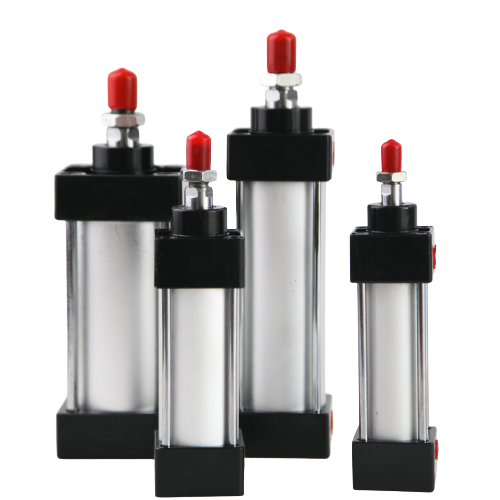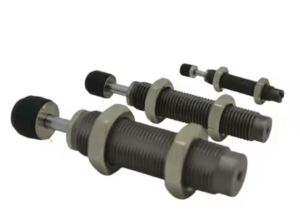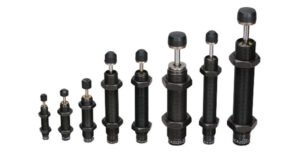Cylinder selection plays a crucial role in the design and application process. So, what factors should be considered when selecting cylinders? Here is a concise overview of the key parameters for cylinder selection:
1.Type: Select the type based on the operating mode
Cylinder operation methods include double-acting, single-acting spring-pressed in, and single-acting spring-pressed out.
- 1)From an operational perspective, cylinders are categorized into single-acting and double-acting, with the former further divided into spring-pressed back and out, typically used in scenarios with short strokes and low requirements for output force and speed. Double-acting cylinders find broader application.
- 2)From a functional standpoint, various types such as standard cylinders, compound cylinders, special cylinders, swing cylinders, and grippers exist, with commonly used ones including free-mounting cylinders, slim cylinders, pen-shaped cylinders, twin-rod cylinders, slide table cylinders, rodless cylinders, rotary cylinders, and clamping cylinders.

2.Bore Diameter: Determine based on relevant load, working pressure, and direction of action.
The selection of cylinder output force, denoted as cylinder force F, is a crucial parameter that designers consider when choosing a cylinder. The cylinder force F refers to the effective force of the piston under the rated pressure, considering factors influenced by friction. The theoretical calculation formula is as presented in figure three:
Where, F: Cylinder effective force (N)
P: Working pressure (bar)
d: Piston diameter (cm)
d1: Piston rod diameter (cm)
f: Resistance (N), f = friction force + back pressure force
Thrust: refers to the outward extension movement of the piston rod; Pull: refers to the inward retraction movement of the piston rod.
3.Stroke: Determine the required moving distance for work, considering working conditions; you can opt for full stroke or reserve stroke.
In general, if the purpose is clamping or supporting a workpiece, it is advisable not to choose the full stroke; instead, leave around a 10mm stroke. For pushing to a specific position, selecting the full stroke is suitable, but ensure to incorporate cushioning.
4.Select the cylinder series based on specific conditions, which can be categorized into three elements: spatial factors, accuracy requirements, specific action requirements
- 1)Spatial factors refer to cylinders with larger or smaller axial or radial dimensions compared to standard cylinders, offering benefits like compact structure, light weight, and small footprint.
- 2)For precision requirements, slide table cylinders are commonly used (integrated pneumatic components that combine the slide table with the cylinder), available in various segmented types. Workpieces can be mounted on the slide table, driven by the cylinder for precise assembly, positioning, and workpiece transfer.
- 3)In cases requiring specific swinging or rotating actions, rotary cylinders are typically employed.
- 4)For clamping/fixing products, pneumatic gripper cylinders are commonly utilized.
5.Cushioning: Options include no cushioning, air cushioning, rubber cushioning, hydraulic cushioning.
6.Magnetic Inductive Switch: Primarily used for detecting the piston stroke of the cylinder for position detection and stopping, magnetic inductive switches can be selected, typically choosing two.
7.Installation Method: Factors to consider during installation include front and rear flange, foot mounting, single or double clevis brackets, mid-hinged axis type, etc.
Tex/Fax: 0086-577-62840011
WhatsApp: 0086-13355775769



